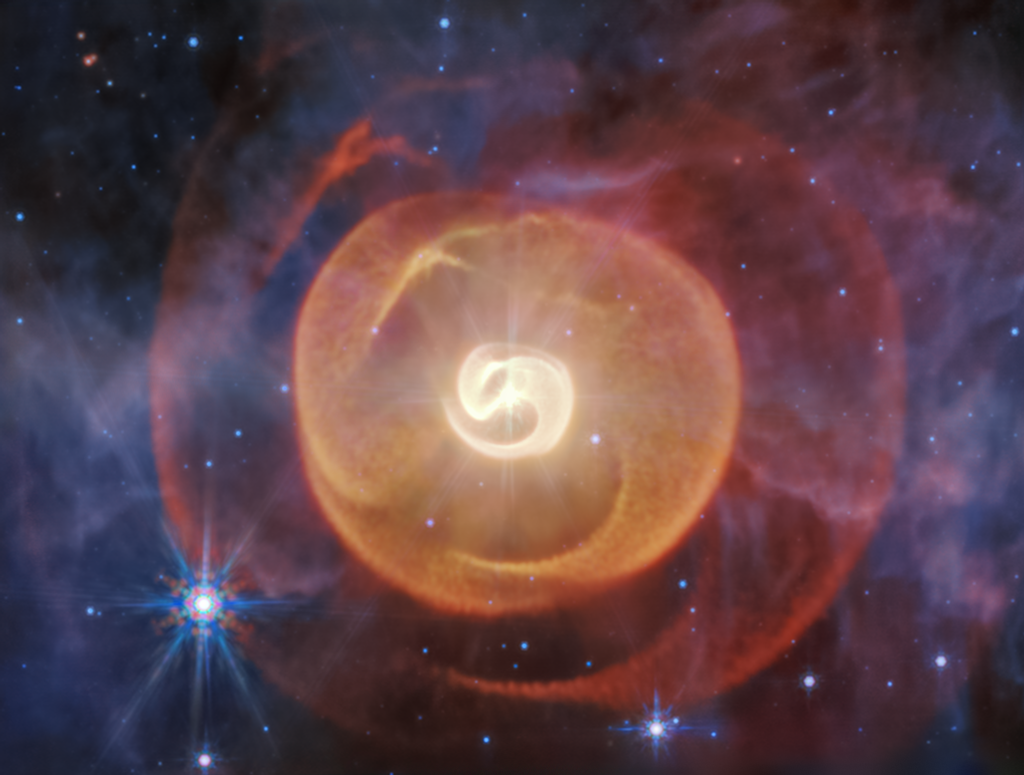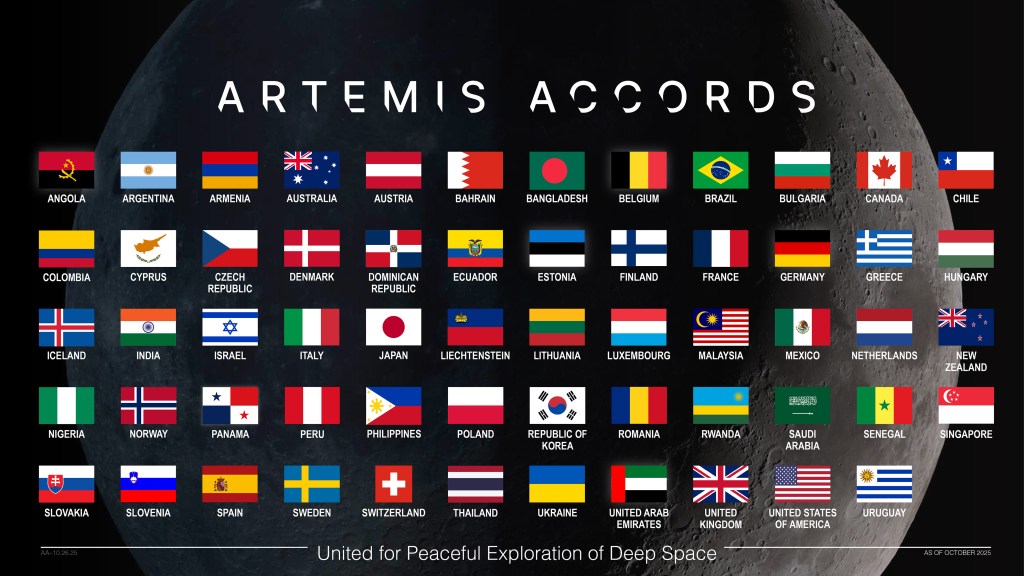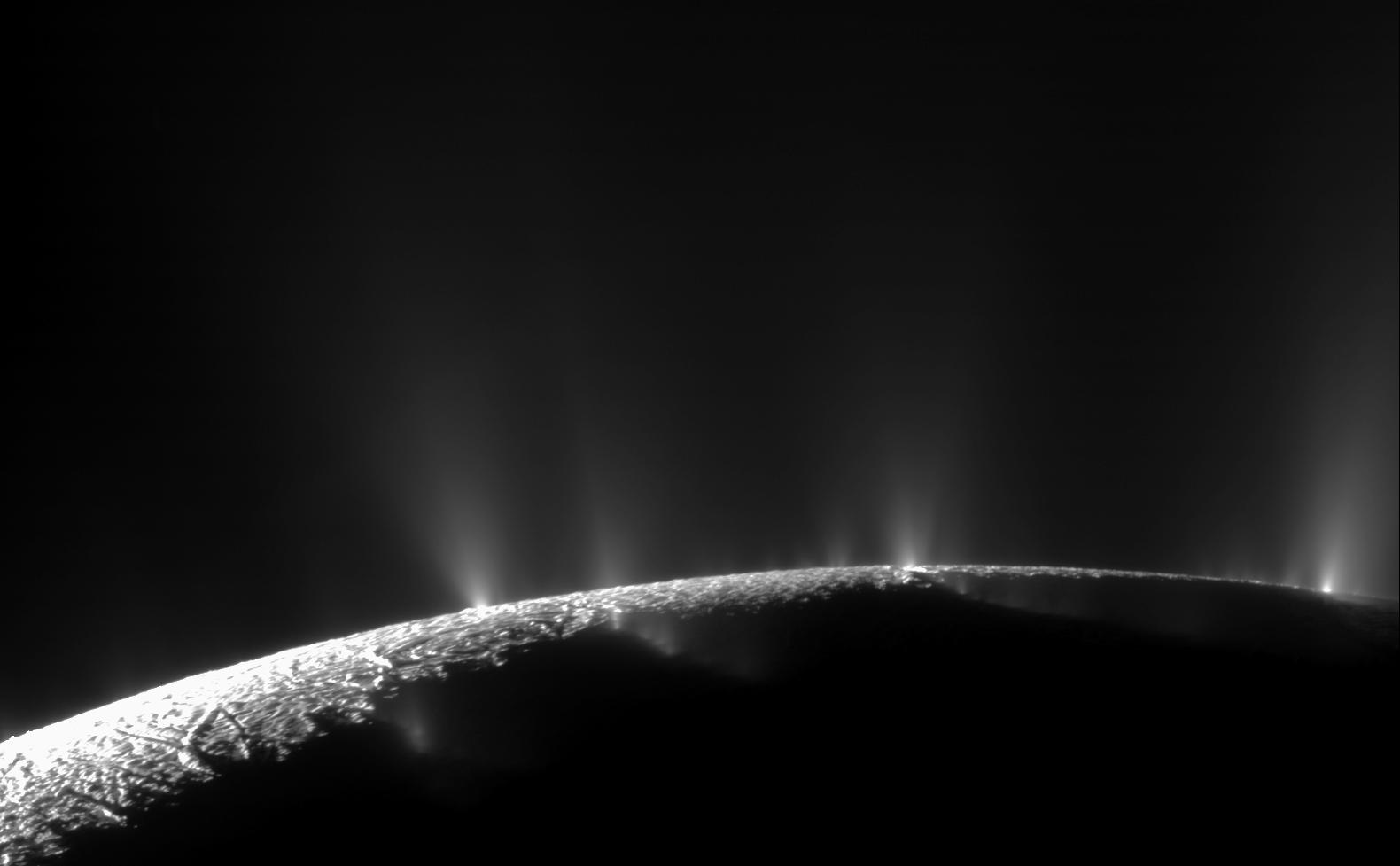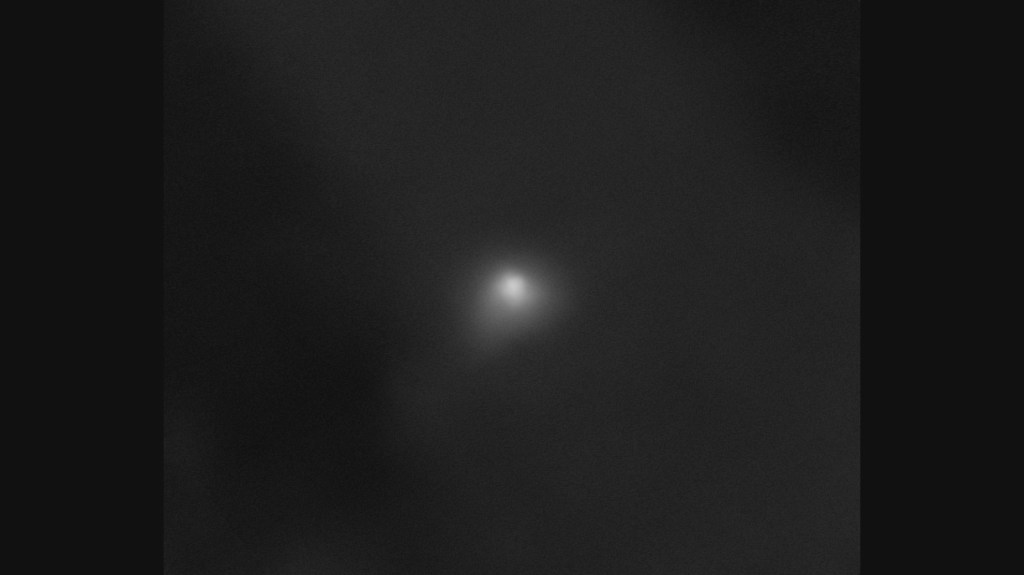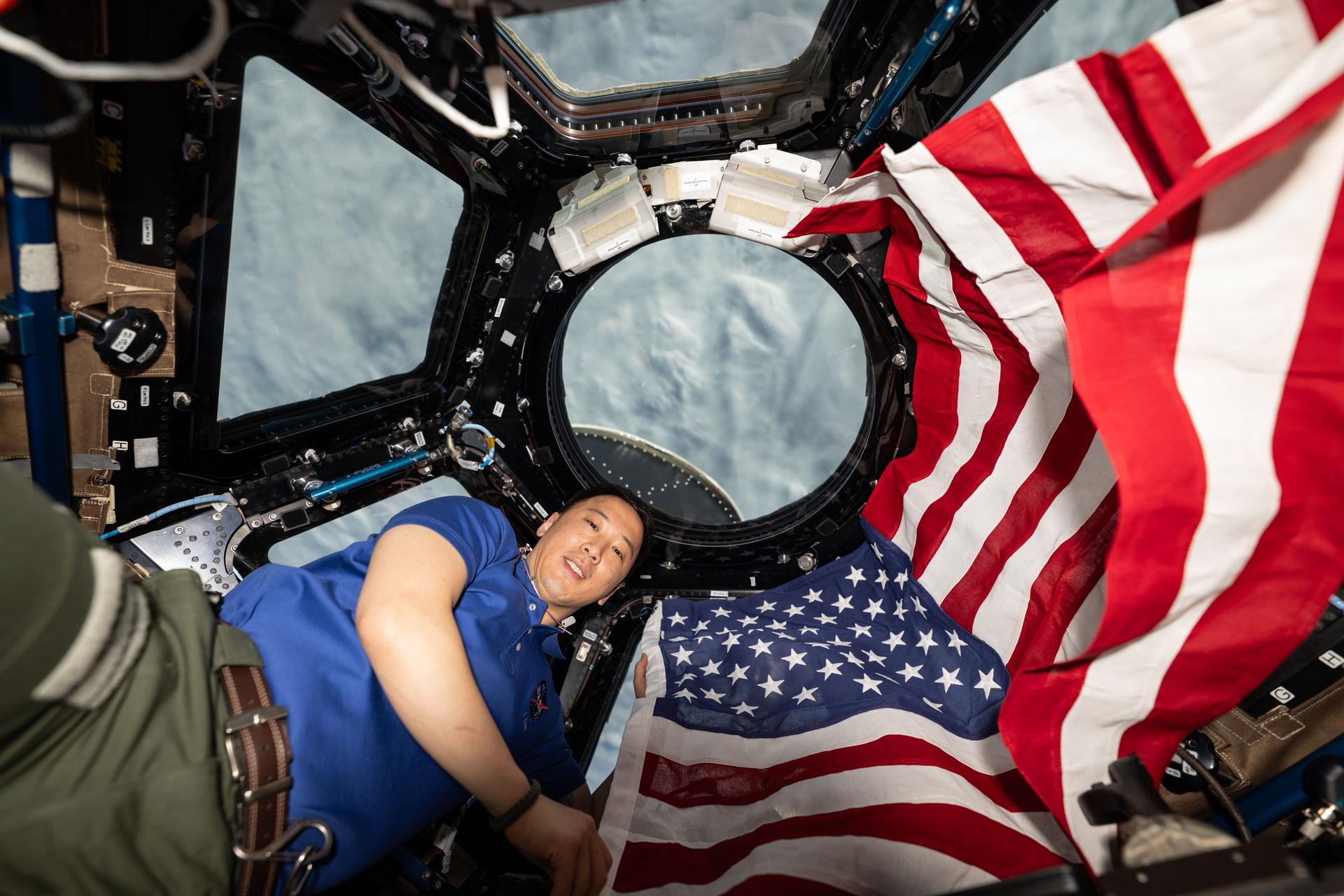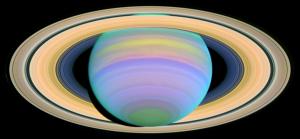
Saturn’s Rings in Ultraviolet Light
This Hubble Space Telescope ultraviolet image of Saturn was taken when the planet's rings were at a maximum tilt of 27 degrees toward Earth. Saturn experiences seasonal tilts away from and toward the Sun, much the same way Earth does. This happens over the course of its 29.5-year orbit. This means that approximately every 30 years, Earth observers can catch their best glimpse of Saturn's south pole and the southern side of the planet's rings. By examining the hazes and clouds present in this image, researchers can learn about the dynamics of Saturn's atmosphere. Scientists gain insight into the structure and gaseous composition of Saturn's clouds. For example, smaller aerosols are visible only in this ultraviolet image, because they do not scatter or absorb visible or infrared light, which have longer wavelengths. For more information, visit: hubblesite.org/news_release/news/2003-23
- X

